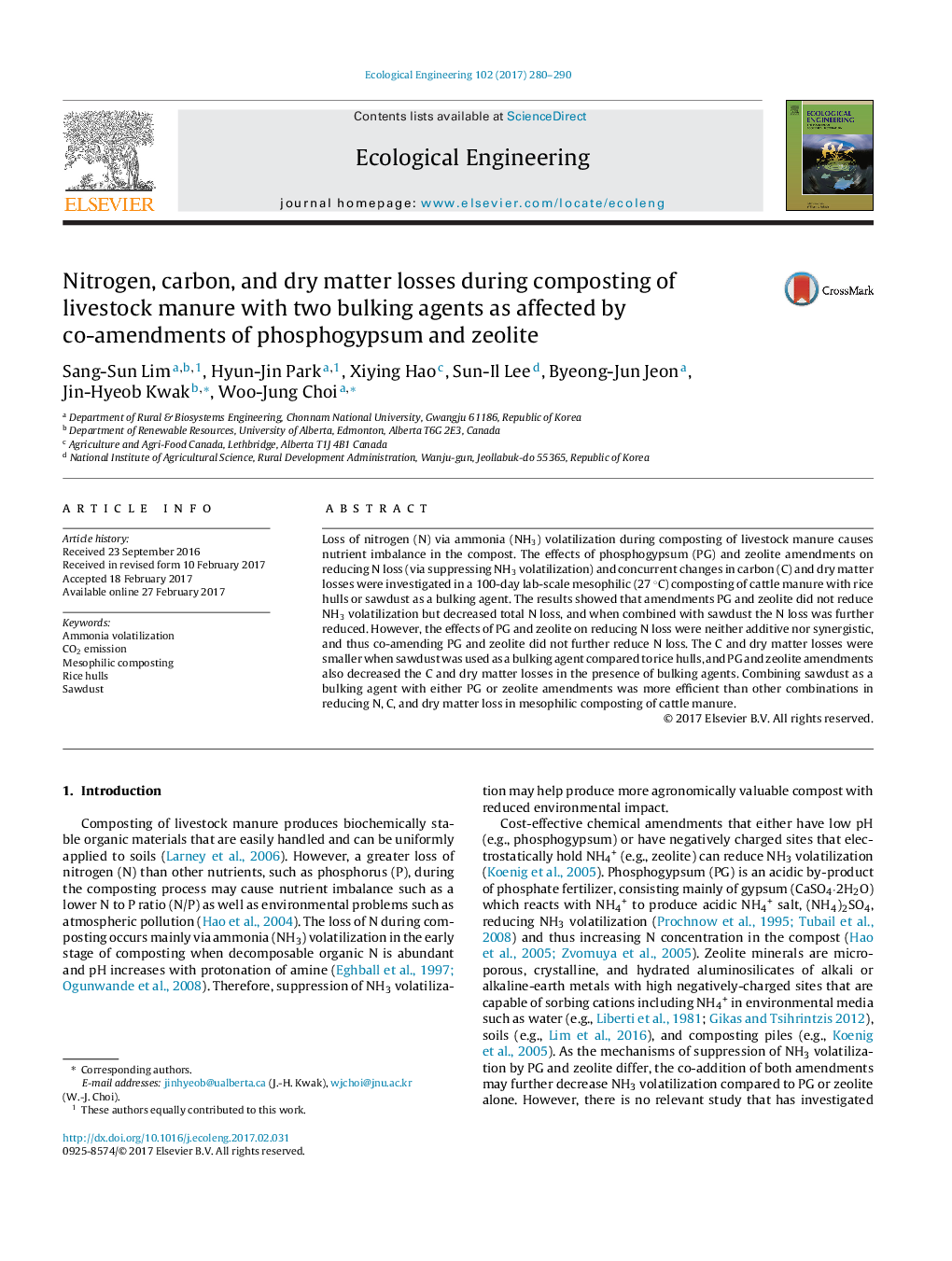| Article ID | Journal | Published Year | Pages | File Type |
|---|---|---|---|---|
| 5743772 | Ecological Engineering | 2017 | 11 Pages |
â¢Phosphogypsum (PG) and zeolite (Z) did not suppress NH3 volatilization.â¢PG and Z amendments reduced total nitrogen (N) loss.â¢PG and Z amendments decreased CO2 emission and carbon (C) loss.â¢Sawdust was more effective than rice hulls in decreasing N and C losses.â¢Combining sawdust with either PG or Z amendments was most efficient.
Loss of nitrogen (N) via ammonia (NH3) volatilization during composting of livestock manure causes nutrient imbalance in the compost. The effects of phosphogypsum (PG) and zeolite amendments on reducing N loss (via suppressing NH3 volatilization) and concurrent changes in carbon (C) and dry matter losses were investigated in a 100-day lab-scale mesophilic (27 °C) composting of cattle manure with rice hulls or sawdust as a bulking agent. The results showed that amendments PG and zeolite did not reduce NH3 volatilization but decreased total N loss, and when combined with sawdust the N loss was further reduced. However, the effects of PG and zeolite on reducing N loss were neither additive nor synergistic, and thus co-amending PG and zeolite did not further reduce N loss. The C and dry matter losses were smaller when sawdust was used as a bulking agent compared to rice hulls, and PG and zeolite amendments also decreased the C and dry matter losses in the presence of bulking agents. Combining sawdust as a bulking agent with either PG or zeolite amendments was more efficient than other combinations in reducing N, C, and dry matter loss in mesophilic composting of cattle manure.
